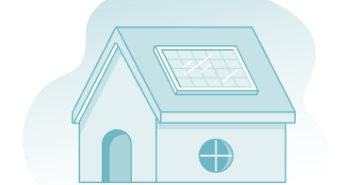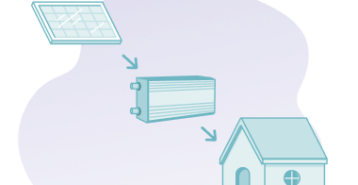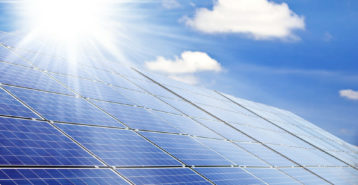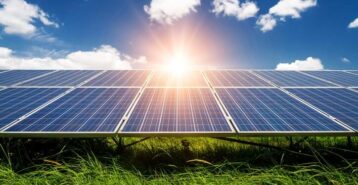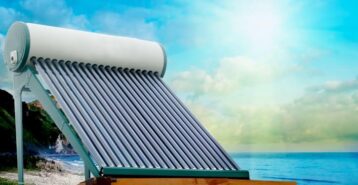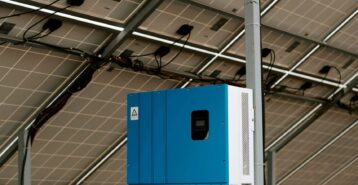Separating Fact From Fiction on Solar Energy
The number of residential solar installations increases yearly as more homeowners realize their long-term cost savings and positive environmental impacts. Home solar adoption increases by 28% annually, according to the Solar Energy Industries Association (SEIA). Still, myths and misconceptions persist about solar energy and solar panel installation. It’s time to debunk them.
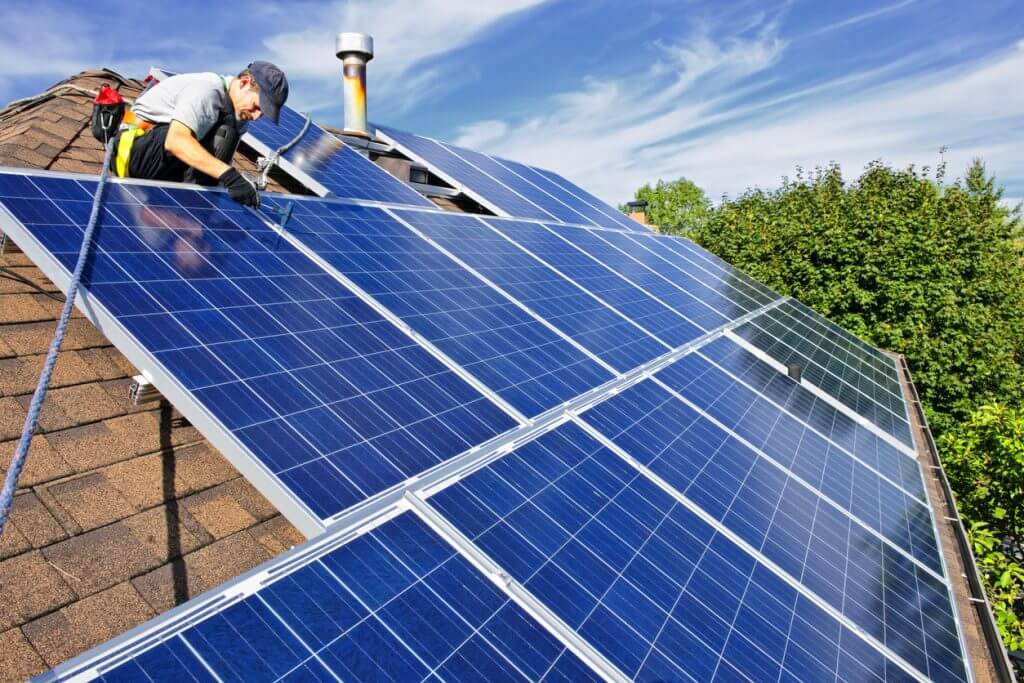
The Truth About Solar Energy
If you’re seeing more and more solar panels nearby, there’s a reason for that. From federal and local incentives to its many benefits, solar energy offers homeowners long-term energy savings and independence.
Key benefits of solar panel installation:
- Lower electric bills
- Long-term savings
- Source of renewable and clean energy
- Reduction in greenhouse gas emissions
- Increase in property value
25 Common Solar Energy Myths
Myth #1: Solar Panels Don’t Work in Cold or Cloudy Climates
Sure, solar panels use direct sunlight. However, they also capture diffuse light, sunlight that’s scattered or filtered by clouds. High-efficiency panels perform well in lower-light areas. Plus, cooler temperatures can actually help panels work more efficiently.
Myth #2: Solar Panels Are Too Expensive for Most People
While solar panel installation requires a significant upfront investment, there are multiple federal and local incentives to help offset the costs and save you money. The federal residential solar energy credit offers a 30% tax credit for solar systems installed between 2017 and 2034. There are also many state and local incentives. Check the Database of State Incentives for Renewables & Efficiency (DSIRE) to determine your eligibility.
Myth #3: Solar Panels Require Constant Maintenance
Solar panels are designed and manufactured to withstand temperature and weather fluctuations for years. Their installation requires few moving parts, reducing their vulnerability to malfunctions. Rainfall often cleans off dust and debris accumulation, and hosing and wiping down panels once or twice a year is usually sufficient for cleaning. Professional solar panel installation is the best way to reduce maintenance. A solar contractor will also install your panels according to manufacturer instructions to maintain your product warranty.
Myth #4: Solar Panels Will Damage My Roof
Professionally installed solar panels include specialized mounting systems to improve waterproofing and prevent roof damage. Solar panels cover a large portion of a home’s roof, shielding it from UV rays, wind, rain, and snow.
Myth #5: Solar Energy Only Works When the Sun Is Shining
This is a common solar myth. However, panels capture diffuse or indirect sunlight and can operate on cloudy days. While high-efficiency systems are designed to operate in all weather conditions, they do capture less solar energy. If you wish to power your home exclusively from solar panels, installing a solar battery is a good solution. Solar batteries store excess energy captured from solar panels and can be used during the night, lower-light days, and during power outages.
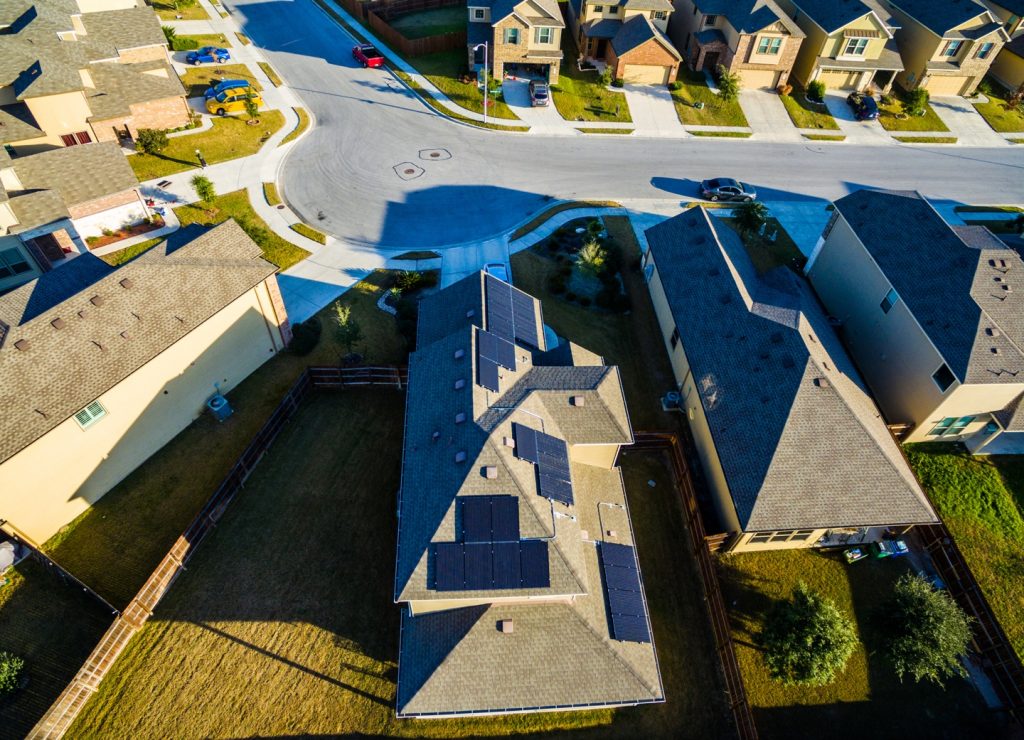
Myth #6: Producing Solar Panels Does More Harm Than Good
While solar panel production does have some environmental impact, it’s much lower than that of traditional electricity sources like coal or natural gas. Panels typically last around 20 years or more, and they generate far more energy over their lifetime than what’s used to make them. Plus, today’s manufacturing methods continue to improve, with more sustainable practices and greater use of abundant materials like aluminum, glass, and silicon.
Myth #7: Solar Panels Only Benefit Sunny States
Thanks to improving technology, high-performance solar panels work well in areas with fewer sunny days compared to sunnier states. Even with their more than 200 annual cloudy days, states like Oregon and Washington have high solar adoption rates because of ample incentives and widespread net metering among utility companies.
Myth #8: Solar Energy Isn’t Worth the Investment if You’re Moving Soon
Homeowner interest in renewable energy is increasing every year. Solar’s popularity can increase property values and may even help your home sell faster. Most solar agreements and warranties are transferable, making a solar panel installation even more attractive to potential home buyers.
Myth #9: All Solar Panels Are the Same
There is a common misconception that all solar panels are the same. In reality, there are several different types. Monocrystalline panels are the most common in residential installations because of their higher efficiency and lifespan. Polycrystalline panels are a less expensive option. However, they come with a lower efficiency range and shorter lifespan. Thin-film panels are flexible and lightweight, but their lower efficiency rating usually makes them more suitable for larger commercial applications.
Myth #10: Solar Panels Make Homes Look Unattractive
This may have been true during the earliest days of solar panel production, but today’s systems feature a lower and sleek profile to blend visually with roof color and pitch. Newer products like roof tiles and solar shingles fully integrate into a home’s roofing system for an unobtrusive and appealing look.
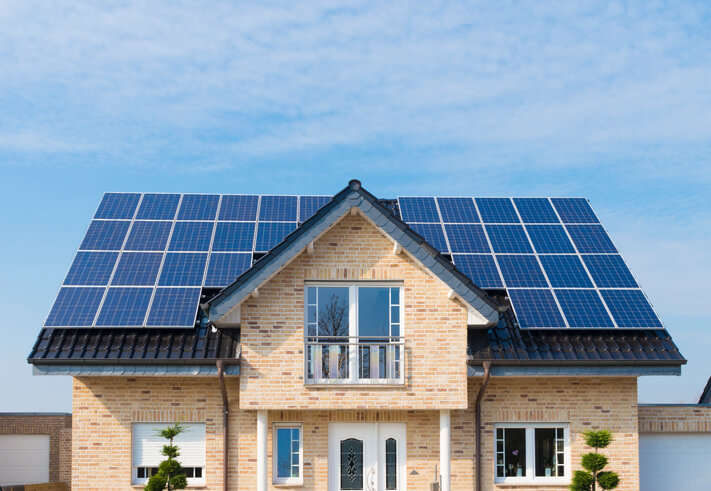
Myth #11: Solar Systems Will Make My Electric Bill Disappear Completely
Solar panel installation will significantly reduce your monthly utility bill, however it probably will not eliminate it. You will still have to rely on the power grid if your solar system is not large enough to power your home continuously, during the evening, or on cloudy days. Net metering can help offset these costs. Your utility company will credit your account with excess energy your home’s panels add to the electrical grid. Then, you can use these credits to pay for your home’s electricity use during peak times and when your panels capture less energy.
Myth #12: Solar Panels Don’t Work Well in Winter
In reality, solar panels can be more efficient in cooler weather. High temperatures increase electrical resistance in a panel’s materials, which can lower performance. Cold, sunny days are actually great for solar energy production. Panels operate more efficiently and can still capture plenty of sunlight, even in winter.
Myth #13: Installing Solar Is a Complicated Process
When installed by a trained professional, the solar installation process is usually simple and seamless. They handle the entire project from start to finish, including any required permitting, design, procurement, and incentive paperwork. Improved panel manufacturing and mounting systems allow most solar installations to be completed in a single day.
Myth #14: Solar Systems Are Unreliable
Today’s solar panels are designed and manufactured for durability and can withstand all seasons and most weather conditions. The average lifespan of most solar is 20 to 30 years, and quality manufacturers offer warranty coverage from 10 to 25 years to ensure reliable and worry-free operation.
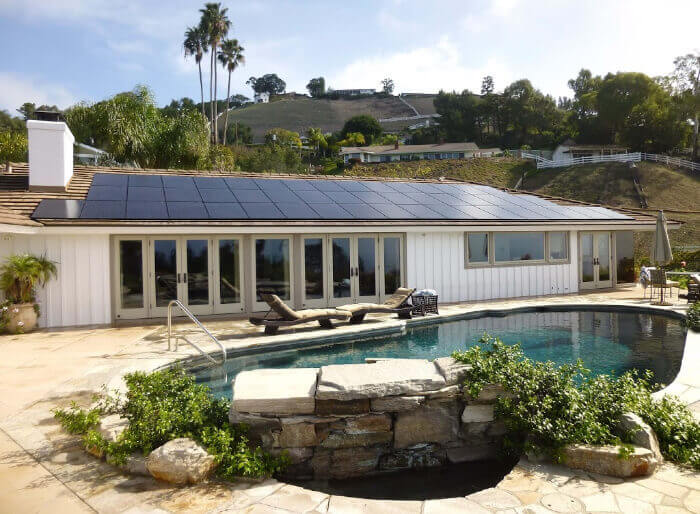
Myth #15: Home Solar Power Can’t Compete With Utility Power
Installing solar panels is a smart long-term investment in your home’s energy independence. Most systems pay for themselves in six to 10 years, and if you live in a state with net metering, you could save even more by sending excess energy back to the grid. Home solar also helps cut your reliance on utility power, which often comes from fossil fuels.
Myth #16: Solar Panels Are a New Technology
The discovery of solar technology occurred more than 100 years ago, and the first solar panel was developed in the 1950s. Technological advances have increased significantly each decade, with improved materials and manufacturing methods. Today’s solar panels are highly efficient in solar energy capture and production, resulting in their widespread use as the world’s most popular renewable energy source.
Myth #17: Solar Panels Make It Hard to Get Insurance
On the contrary, installing solar panels is perceived as a valuable investment that most insurance carriers are prepared to accommodate. Most carriers’ policies include roof-mounted solar panels with varying levels of coverage and protection. While premium costs may increase slightly to account for potential replacement costs in the future, long-term savings from solar panels offset this.
Myth #18: Solar Panels Cause Health Problems
No adverse health outcomes have been linked to solar panels after decades and millions of residential and commercial installations. Solar panels use a photovoltaic process to convert solar energy into electricity and do not emit radiation. Widespread solar adoption reduces greenhouse gasses to improve air quality and public health.
Myth #19: Solar Panels Aren’t Efficient Enough Yet
With improved technologies and production methods, today’s solar panels are more efficient than ever before. Monocrystalline panels lead in solar capture and conversion efficiency rates between 20% to 24%, offering the highest performance in residential applications.
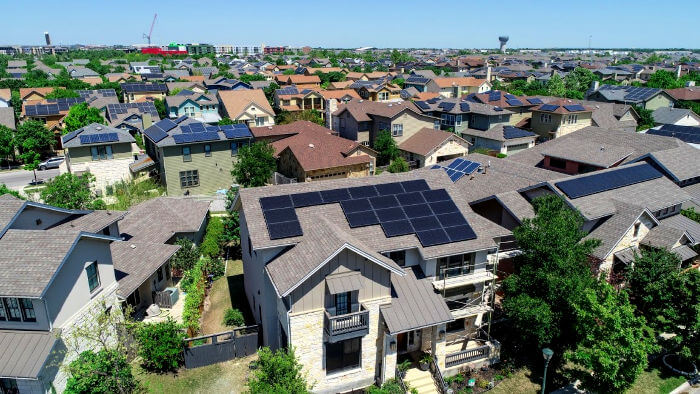
Myth #20: Solar Energy Can’t Power My Entire House
Ongoing advances in solar technology and increasing energy efficiencies of home systems and appliances make powering a home 24/7 possible. Right-sizing your solar panels to your household energy needs, using net metering where available, and adding solar battery storage are ways to optimize home solar installation over time.
Myth #21: Solar Panels Require Expensive Battery Storage
While off-grid installations and complete energy independence require solar batteries, most home solar systems connect to the electrical grid to supply backup usage.
Myth #22 Solar Panels Don’t Require a Permit
You will need to obtain a permit and inspection to complete your solar installation. Both are necessary to ensure your panels are installed correctly and safely and are properly connected to the utility grid. Some homeowners associations also have specific solar guidelines and may require a review process or approval.
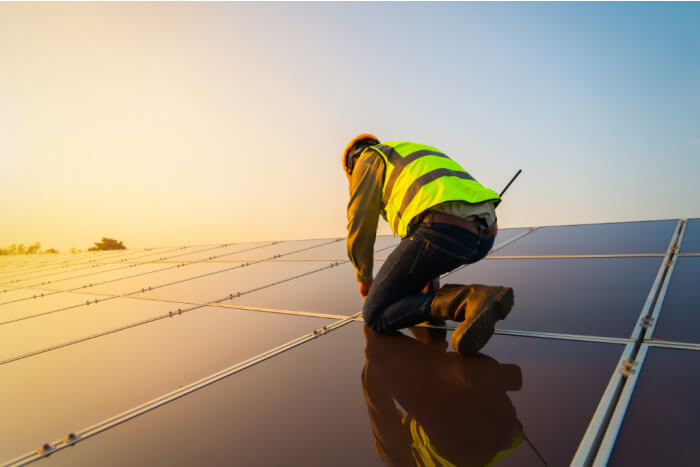
Make an Informed Choice: The Real Benefits of Solar Energy
Going solar can lower your monthly energy bills, and thanks to federal and local incentives, installation is more affordable than ever. Solar energy is clean, reliable, and renewable. It helps reduce your home’s carbon footprint and limits your dependence on fossil fuels.
Compare top-rated solar pros in your area.
Read real homeowner reviews, explore qualifications, and view promotions. Modernize makes it easy to browse professionals and find one that will be perfect for your project.



